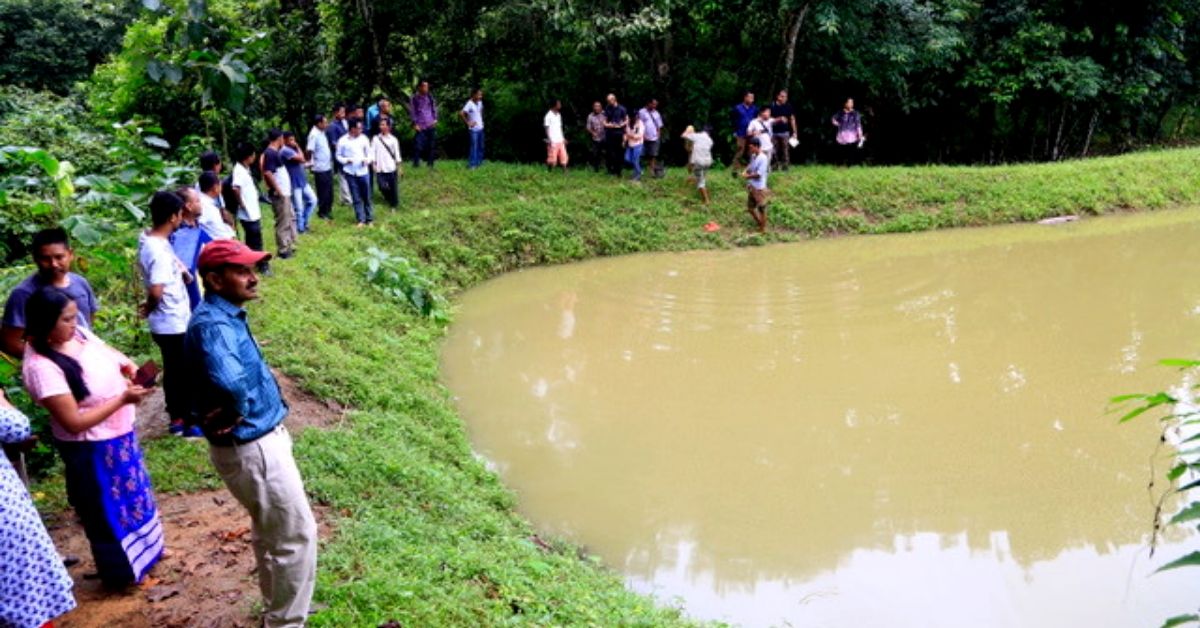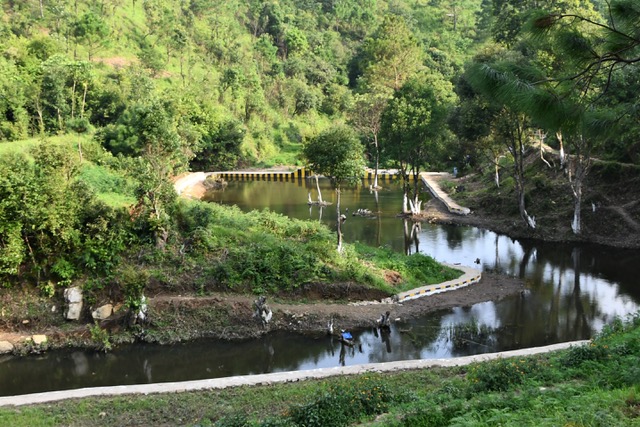Meghalaya First State to Implement Water Policy: IAS Officer Explains What It Means
Within a month of the policy getting a nod at the cabinet, #IAS Sampath Kumar has roped in 2000 villages to implement it. A great start that is sure to set the momentum! #Governance #WaterConservation

Despite being blessed with generous rainfall almost throughout the year, Meghalaya still has to grapple with the aftermath.
Several areas in the hilly state get flooded during monsoons—when the rains are the most abundant and longer-lasting. However, just as the clouds recede and the frequency reduces, all the water flows away to the neighbouring Assam and Bangladesh, leaving the citizens, farms and forests wanting.
A water policy can be implemented on a macro as well as a micro level. Why not start at your own home and save up to 80% of the water you used? To know how, check out this super easy method, here.
Earlier this week, the state cabinet approved a water policy, making Meghalaya the first state in the country to adopt one. The Better India spoke with IAS officer Sampath Kumar, the Commissioner and Secretary to the Community and Rural Development and Water Resources Departments in the state. He stands at the unique position of influencing villages to implement the policies aimed at conserving water resources.
“Back in 2016, we had started a field level leadership and community mobilisation programme and the team visited all the blocks in the State. There, we sat with all the village employment council members, SHG members and tried to understand what pain points they were facing and what kind of initiatives and projects they had taken up to address those pain points. Wherever we found gaps and lack of information, my team and I would mentor them. These relentless efforts resulted in us getting a higher budget under the Mahatma Gandhi National Rural Employment Guarantee Act (MGNREGA),” Kumar says adding that these tours to the villages formed the foundation of formulation of the water policy as many villages identified water as a major issue.
He says that the State Water Policy brought out by the Government of Meghalaya is like a mission statement. It’s a resolve to make collective efforts for ensuring water security to both present and future generations.
The State Water Policy has specific objectives that fulfil the set priorities of domestic needs, minimum ecological needs, agriculture, hydropower generation, economic/industrial use/ fisheries before releasing the retained water for other purposes.
Villages and industries, two primary stakeholders, will be roped in to achieve these objectives and also to retain monsoon waters
Kumar’s unique position as the secretary of two crucial departments—village development and water resources—has given him the responsibility of connecting investors, state ministers and implementers together.
“The primary aim is to recognise water as a common pool resource.
Only then can rainwater be harvested in catchment areas and the rest let in villages or areas that are at the downward end of the flow.

My role here is to bring everyone together and mobilise them to interconnect villages through the common food resource of water,” the IAS officer says.
He explains that as part of the water policy, the government has brought out an institutional architecture to implement the water policy and are currently in the process of forming Village Water Resources Councils (VWRC) which will follow the guidelines set by Village Employment Councils (VEC).
VECs are community institutions, headed by a member of every household to implement the benefits of MGNREGA. Similarly, VWRCs will include every household in the task of implementing initiatives and availing benefits of the water policy.
The State started the intensive water conservation campaign under Jal Shakti Abhiyan (JSA) at the beginning of this month and have already included over 2000 villages to implement the water policy. Efforts are being made to get the remaining of the total of 6400 villages in the state to join the brigade.
Prior to this, the state government had launched a programme called ‘One Tree – One Citizen’ wherein 1.2 million water conservation trees were planted on the World Environment Day (June 5, 2019) in the catchment areas of over 300 spring sheds.
Apart from recognising water as a common pool resource and harvesting it, here are the key objectives that the policy aims to achieve:
1) To provide sustainable, economical and efficient allocation of water.
2) To ensure the reduction of overall use, reuse what can be reused and recycle the rest of the water.
3) To provide enough water for the citizens, according to the priorities set earlier by the government.
4) To enhance the resilience of the vulnerable areas to disasters and impacts of climate change.
5) To bring in the latest provisions, technology and innovations to aid in the conservation of water.
One of the first steps to achieve this is to map water bodies for their conservation and sustainable use. Apart from that, the assessment of surface and groundwater for availability and quality as well as to prepare an inventory of developmental projects for these water sources are crucial steps to be taken.
In a statement, Prestone Tynsong, the Deputy Chief Minister of Meghalaya said, “All issues related to [the] utilisation of water and livelihood and how to preserve water bodies have been outlined in this policy including community participation in the implementation of this policy by constituting a water sanitation village council at the village level.”
With the country witnessing widespread floods, droughts and severe water scarcity in cities and villages, having a water policy in place is an encouraging idea.
Although it has been implemented only earlier this month, the involvement of thousands of villages in such a short period is excellent news. However, only once the policy is implemented in its entirety, can we test how well it works.
You may also like: Meghalaya IAS Travels in Boats to Flooded Villages to Ensure Safety of 1 Lakh Citizens
(Edited by Gayatri Mishra)
Feature image courtesy of Sampath Kumar.
Like this story? Or have something to share? Write to us: [email protected], or connect with us on Facebook and Twitter.
This story made me
- 97
- 121
- 89
- 167
Tell Us More
We bring stories straight from the heart of India, to inspire millions and create a wave of impact. Our positive movement is growing bigger everyday, and we would love for you to join it.
Please contribute whatever you can, every little penny helps our team in bringing you more stories that support dreams and spread hope.



















